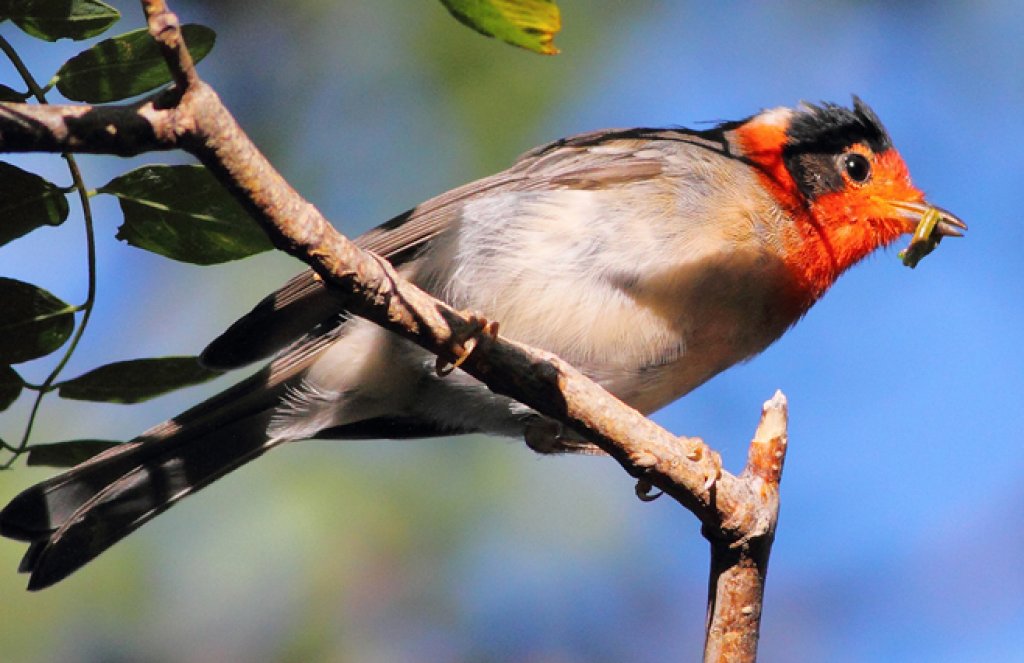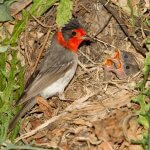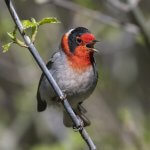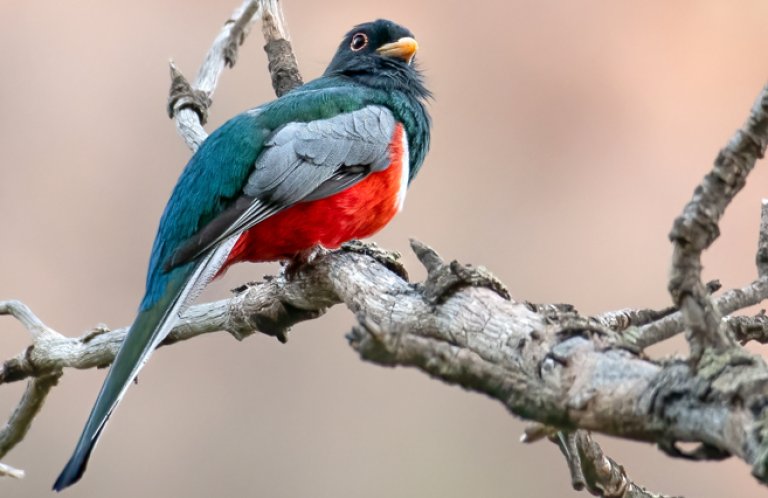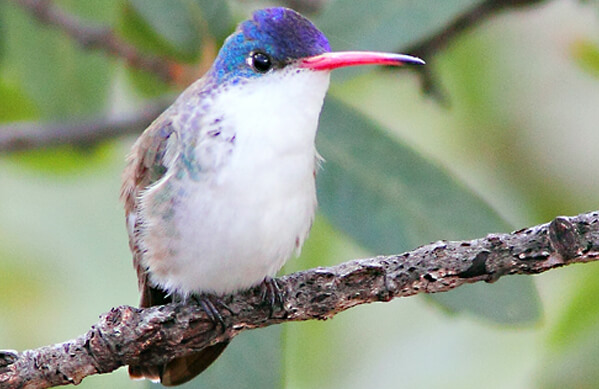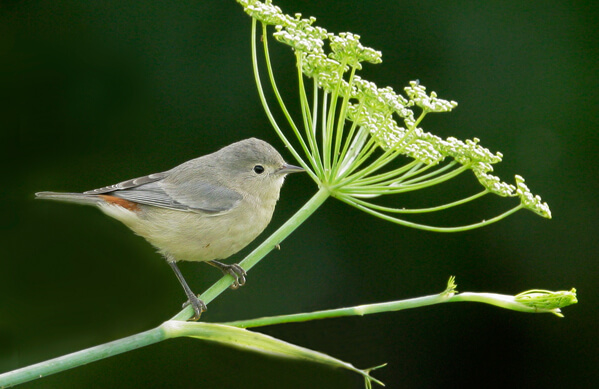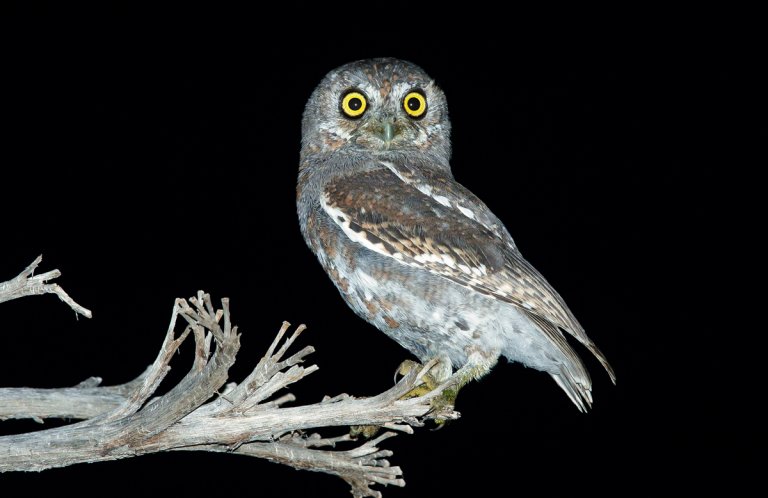About the Red-faced Warbler
The Red-faced Warbler is one of only two North American warblers with red plumage; the other is the Painted Redstart, another species of the Mexican border. The Red-faced Warbler keeps its vivid red facial plumage year-round, and both sexes look alike, although males are generally brighter than females.
This flashy warbler can be found alongside more widespread neotropical migrants such as the Hermit Thrush, as well as in the vicinity of other endemics more commonly seen in Mexico and Central America, including the Elegant Trogon and Olive Warbler.
The most likely places to find a Red-faced Warbler in the United States are specialized habitats known as “sky islands.”
Inland Islands
The Red-faced Warbler occurs in “sky islands,” also known as the Madrean Sky Islands, or Madrean Archipelago. These are the tops of isolated mountains rising from the dry deserts and grasslands of the southwestern United States and northwestern Mexico. The mountains' height allows them to reach cooler, more humid climate zones, so they develop unique ecosystems at the top, surrounded by lower, drier desert. The species adapted to these ecosystems are as isolated as if they were surrounded by ocean.
The solitary mountain “island” chains link the subtropical Sierra Madre mountains of Mexico to the temperate Rocky Mountains in the U.S. Each of these inland islands contain a wide range of ecosystems and climatic conditions, allowing for an extremely high diversity of animals and plants, many found at the northern and southern limits of their usual ranges.
Along with the Red-faced Warbler, a number of other bird species that frequent these sky islands in the U.S. or Mexico include the Thick-billed Parrot, Whiskered Screech-Owl, and Violet-crowned Hummingbird.
Songs and Sounds
The Red-faced Warbler sings a quick, high-pitched song that resembles a Yellow Warbler's. See if you agree!
Breeding and Feeding
Who's Your Daddy?
During breeding season, pairs of Red-faced Warblers maintain an all-purpose territory where both male and female feed. The male establishes, defends, and advertises the territory, and the female also defends the territory against other females.
Although this species appears to be typically monogamous (a single pair maintains and defends a territory), it engages in high rates of “extra-pair” activity. Neighboring males often sneak onto established territories to copulate with females of other pairs, and females occasionally leave their territory seeking other males. In fact, almost three-quarters of nests contain a young bird fathered by a male other than the territory owner.
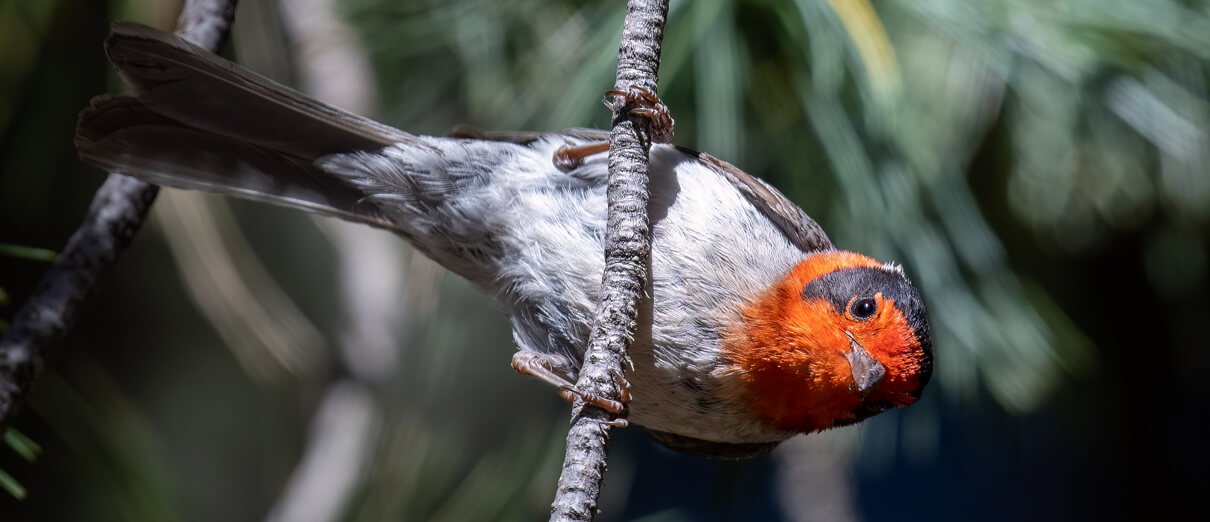
After pairing, the female Red-faced Warbler builds its cup-shaped nest in a hollow on the ground. The nest site is often on a slope in the open, or at the base of a woody plant. Sometimes the nest site has an overhang provided by a plant stem, log, or rock, which helps to conceal and protect the nest. The nest itself is made of bark, leaves, or pine needles, with a lining of grasses or animal hair. Only the female incubates the eggs, but both parents feed the young when they hatch.
Festive Foragers
Red-faced Warblers prefer to forage in trees with dense foliage, particularly in conifers, where they glean a variety of insects, especially caterpillars, from the outer branches. This species also hover-gleans like a Southwestern Willow Flycatcher to catch insects. During the summer, males tend to feed higher in the trees than females, pausing to sing as they forage.
Region and Range
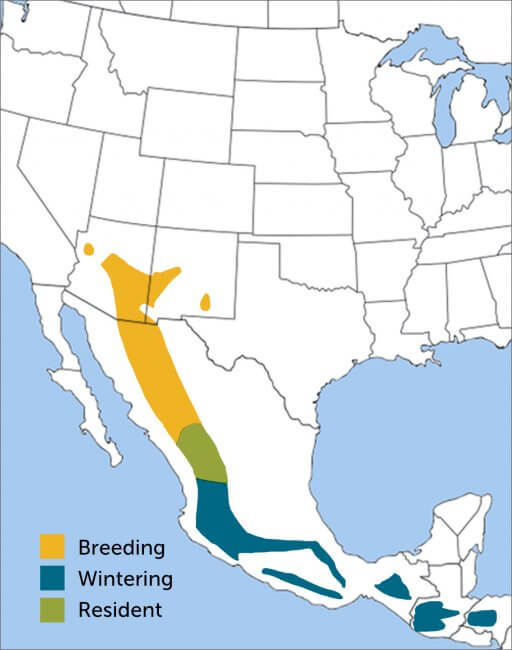
The Red-faced Warbler is one of the least-studied North American warblers, as its range barely reaches the United States. Partners in Flight estimates that only around 36 percent of the population breeds in the U.S., in the sky islands of Arizona and New Mexico, with the majority living in Mexico.
This species has a relatively short migration for a North American warbler, unlike the more typical long-distance treks undertaken by species such as the Cerulean or Blackpoll Warblers.
Conservation of the Red-faced Warbler
Saving the Sky Islands

Help support ABC's conservation mission!
Like other neotropical migrants of the American Southwest such as the Elf Owl and Lucy's Warbler, the Red-faced Warbler would benefit from habitat conservation and restoration on both sides of the U.S. and Mexican border. Conservation of the Red-faced Warbler's “sky island” breeding habitat, as well as stopover and wintering areas, is necessary to keep this bird's populations intact.
ABC's BirdScapes approach guides conservation and restoration of key habitats for the Red-faced Warbler; our work with partners to “bring back the birds” is another large-scale conservation strategy that aims to stabilize populations of this warbler and other migratory birds.
Get Involved
Policies enacted by the U.S. Congress and federal agencies, such as the U.S. Fish and Wildlife Service, have a huge impact on migratory birds. You can help shape these rules for the better by telling lawmakers to prioritize birds, bird habitat, and bird-friendly measures. To get started, visit ABC's Action Center.
Living a bird-friendly life can have an immediate impact on migratory birds in the United States. Doing so can be as easy as adding native plants to your garden, avoiding pesticides, and keeping cats indoors. To learn more, visit our Bird-Friendly Life page.
American Bird Conservancy and our Migratory Bird Joint Venture partners have improved conservation management on more than 8.5 million acres of U.S. bird habitat — an area larger than the state of Maryland — over the last ten years. That's not all: With the help of international partners, we've established a network of more than 100 areas of priority bird habitat across the Americas, helping to ensure that birds' needs are met during all stages of their lifecycles. These are monumental undertakings, requiring the support of many, and you can help by making a gift today.





































